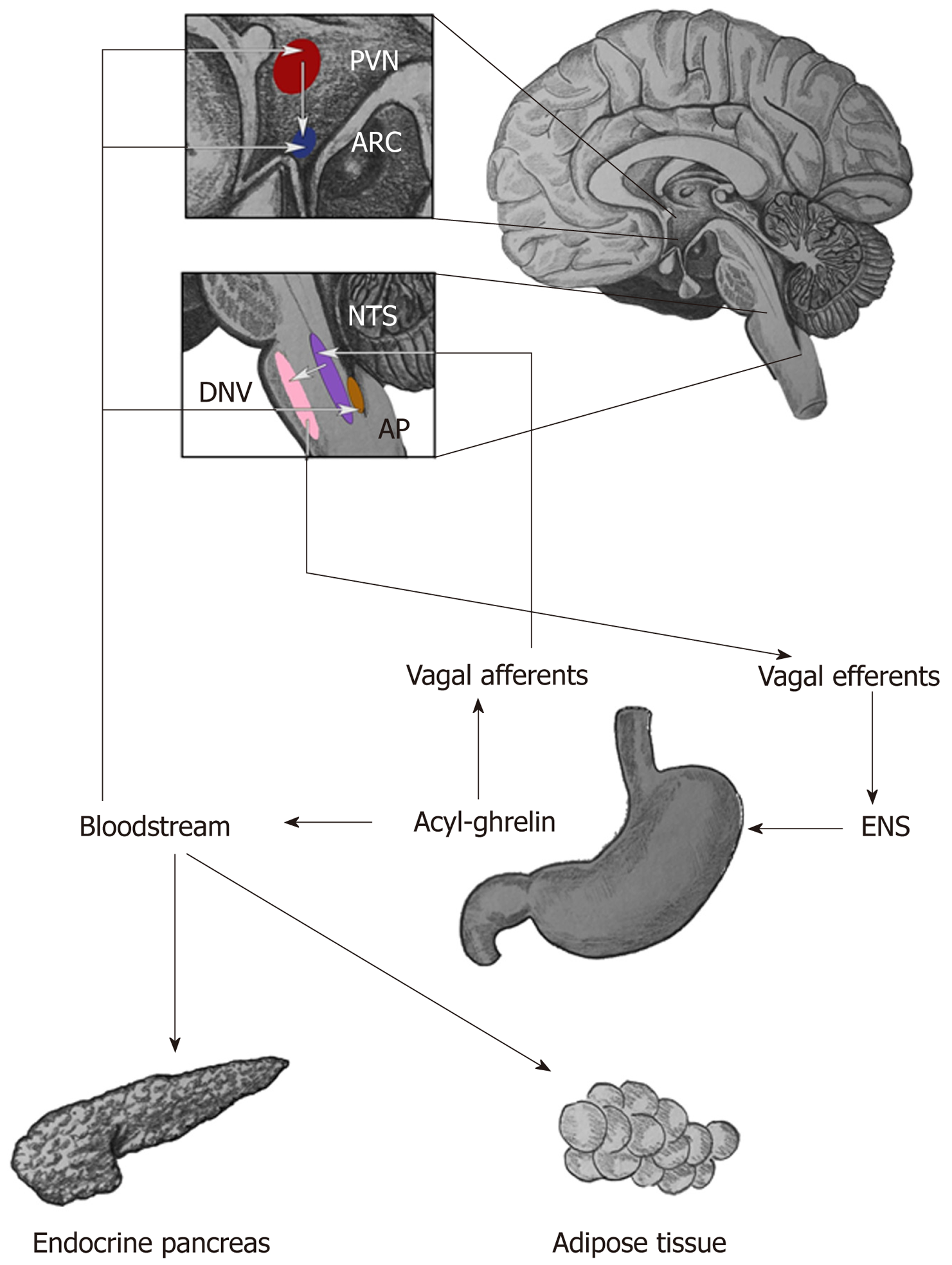Copyright
©The Author(s) 2019.
World J Gastroenterol. Feb 7, 2019; 25(5): 539-551
Published online Feb 7, 2019. doi: 10.3748/wjg.v25.i5.539
Published online Feb 7, 2019. doi: 10.3748/wjg.v25.i5.539
Figure 1 Acyl-ghrelin is produced by stomach P/D1 cells.
It enters the bloodstream, reaching the pancreas, where it inhibits insulin release, and adipose tissue, where it inhibits adipogenesis. Through the circulation, it also acts on the paraventricular and arcuate nuclei of the hypothalamus, increasing growth hormone releasing hormone release and appetite. It also affects neurons in the area postrema, where it acts to decrease nausea. Ghrelin acts directly through the GHSR receptor on vagal afferents, which project to the nucleus tractus solitaries of the brainstem. This region in turn connects to the dorsal motor nucleus of the vagus nerve, which gives rise to vagal efferent that increase gastric contractions, acid secretion, and GI motility through the enteric nervous system. Ghrelin does not affect defecation, as it cannot penetrate and act on the defecation center of the spinal cord[11,18,24,37,39,96]. PVN: Paraventricular; ARC: Arcuate; AP: Area postrema; NTS: Nucleus tractus solitaries; DNV: Dorsal motor nucleus of the vagus nerve; ENS: Enteric nervous system.
- Citation: Koutouratsas T, Kalli T, Karamanolis G, Gazouli M. Contribution of ghrelin to functional gastrointestinal disorders’ pathogenesis. World J Gastroenterol 2019; 25(5): 539-551
- URL: https://www.wjgnet.com/1007-9327/full/v25/i5/539.htm
- DOI: https://dx.doi.org/10.3748/wjg.v25.i5.539









